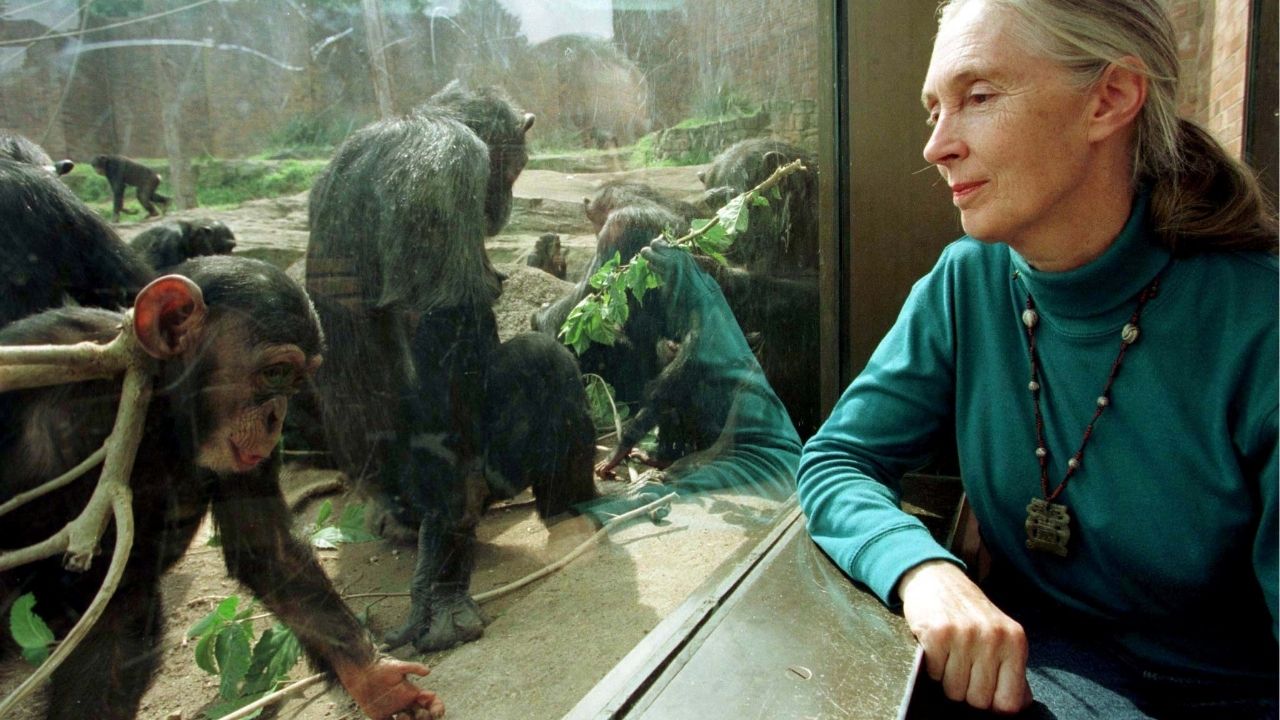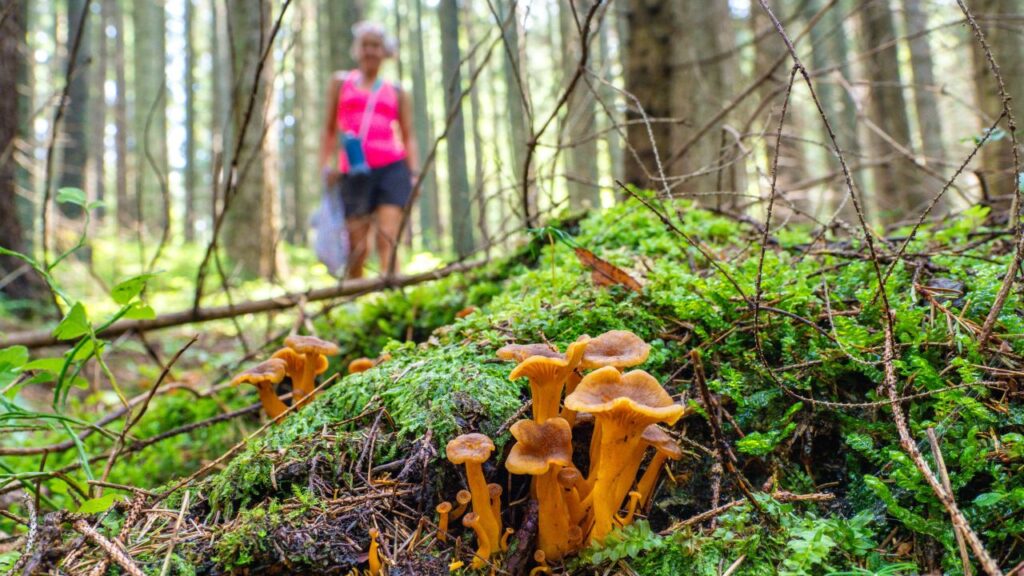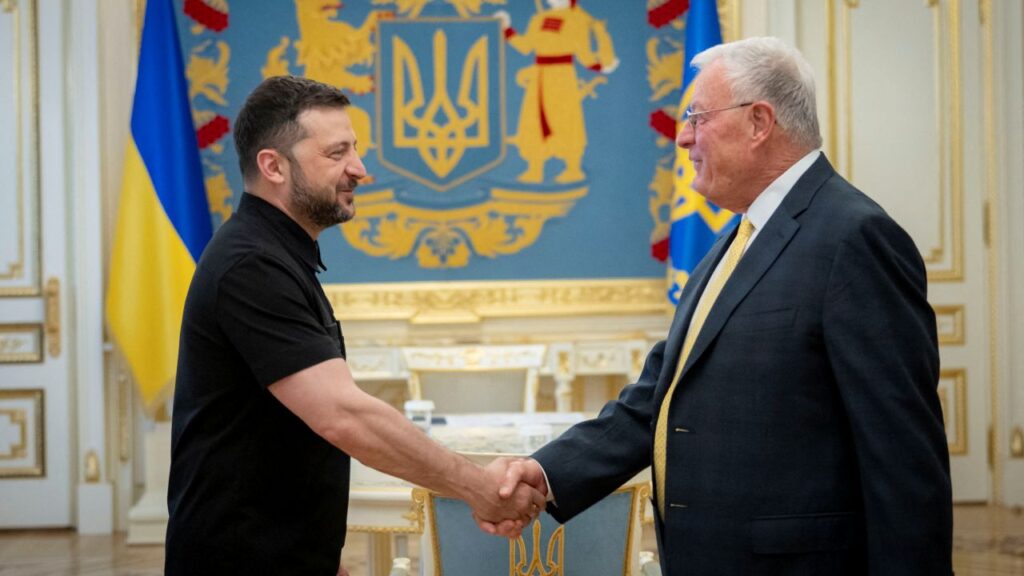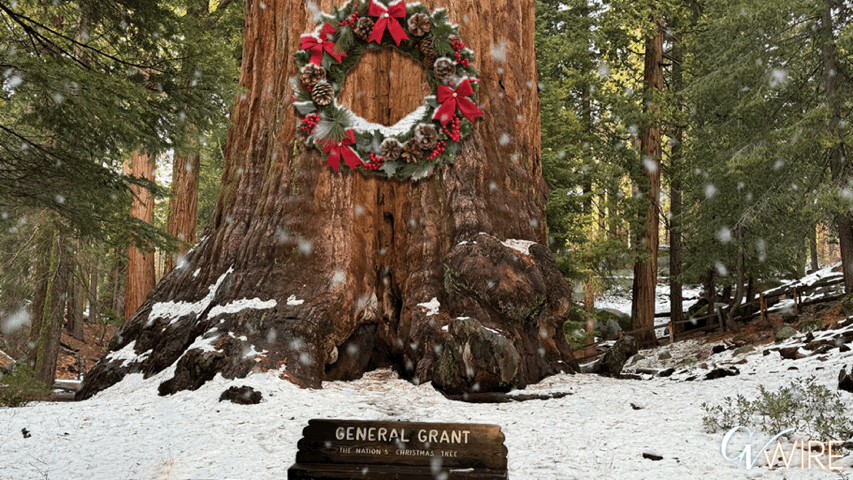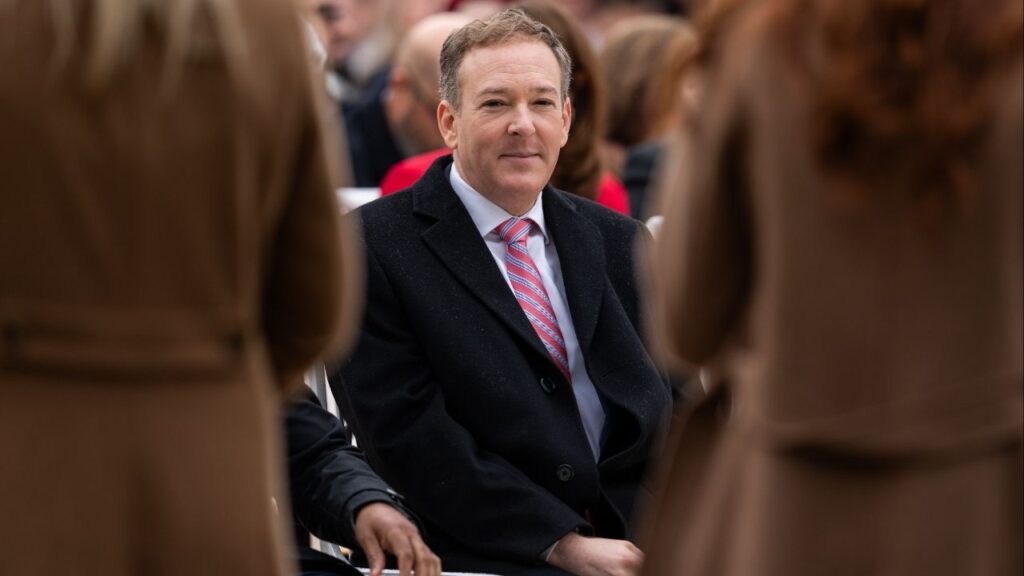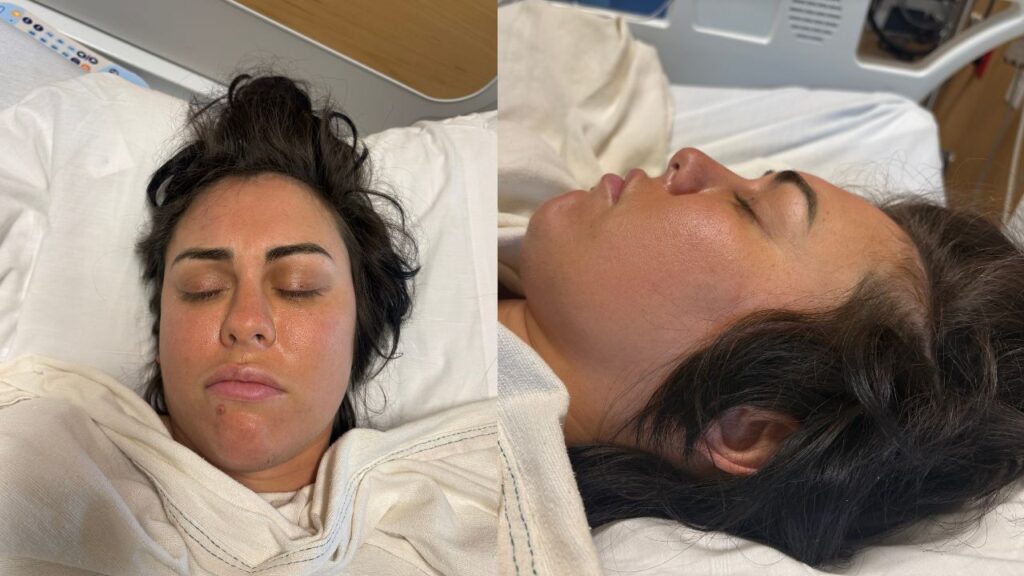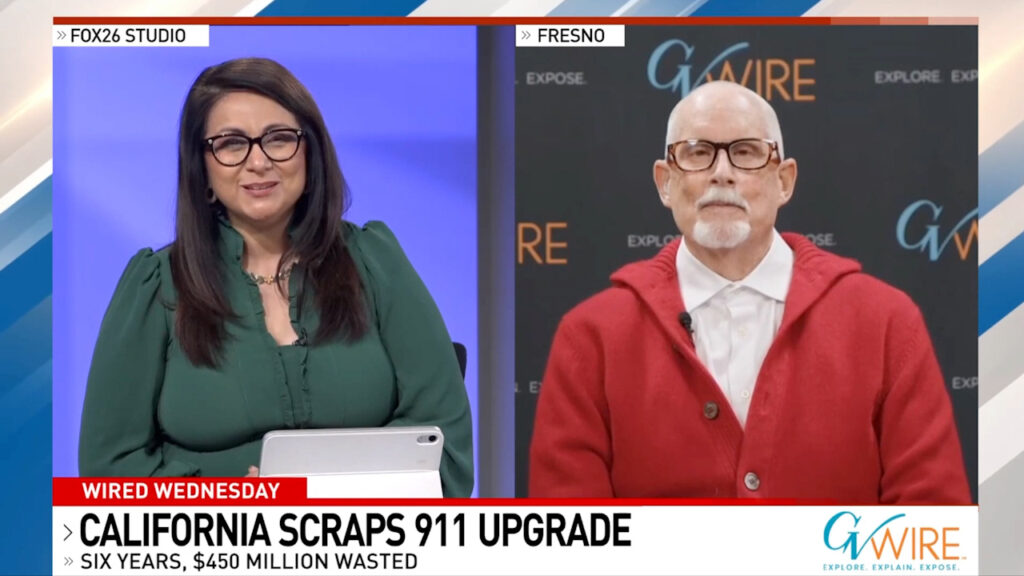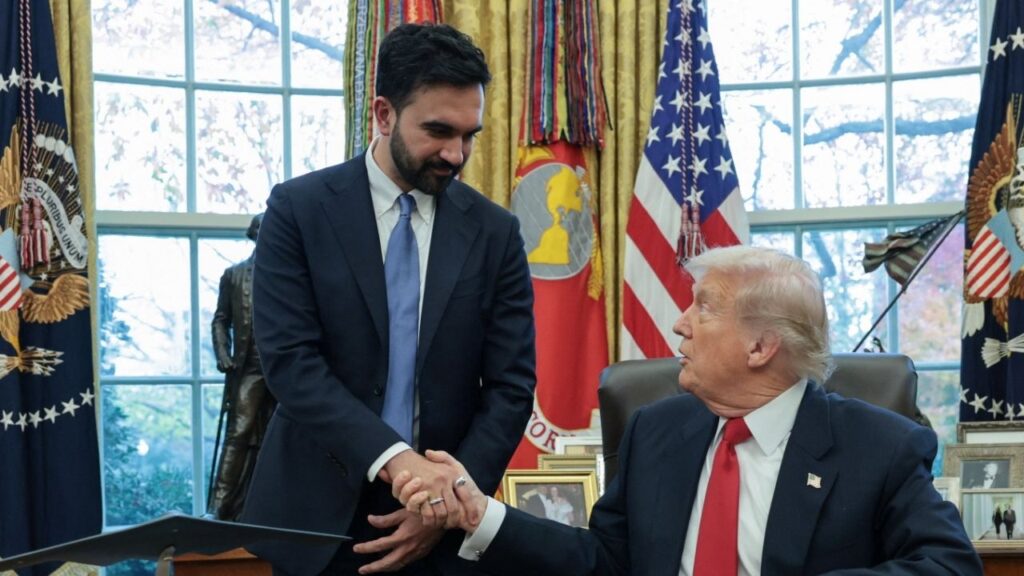English Dr. Jane Goodall, chimpanzee researcher and naturalist, observes through glass some of Taronga Zoo's 25 member chimpanzee colony in Sydney, August 31. Goodall, who has spent most of her life studying chimpanzees in Africa is in Australia to raise awareness that chimpanzee numbers in the wild have plummeted 75 percent in 10 years leaving only 250,000 in their homelands of Central and West Africa. AUSTRALIA/File Photo

- Jane Goodall, pioneering primatologist and global environmental advocate, died at 91 after revolutionizing science and inspiring conservation.
- Goodall’s Gombe chimpanzee research reshaped understanding of animal behavior, introducing named personalities, tool use, and emotional connections.
- Later a climate activist, Goodall founded her institute, created Roots & Shoots, wrote 30 books, and received global honors.
Share
|
Getting your Trinity Audio player ready...
|
Scientist and global activist Jane Goodall, who turned her childhood love of primates into a lifelong quest for protecting the environment, died on Wednesday at the age of 91, the institute she founded said.
Goodall died of natural causes, the Jane Goodall Institute said in a social media post.
“Dr. Goodall’s discoveries as an ethologist revolutionized science, and she was a tireless advocate for the protection and restoration of our natural world,” it said.
The primatologist-turned-conservationist spun her love of wildlife into a life-long campaign that took her from a seaside English village to Africa and then across the globe in a quest to better understand chimpanzees, as well as the role that humans play in safeguarding their habitat and the planet’s health overall.
Goodall was a pioneer in her field, both as a female scientist in the 1960s and for her work studying the behavior of primates. She created a path for a string of other women to follow suit, including the late Dian Fossey.
She also drew the public into the wild, partnering with the National Geographic Society to bring her beloved chimps into their lives through film, TV and magazines.
She upended scientific norms of the time, giving chimpanzees names instead of numbers, observing their distinct personalities, and incorporating their family relationships and emotions into her work. She also found that, like humans, they use tools.
“We have found that after all there isn’t a sharp line dividing humans from the rest of the animal kingdom,” she said in a 2002 TED Talk.
As her career evolved, she shifted her focus from primatology to climate advocacy after witnessing widespread habitat devastation, urging the world to take quick and urgent action on climate change.
“We’re forgetting that were part of the natural world,” she told CNN in 2020. “There’s still a window of time.”
In 2003, she was appointed a Dame of the British Empire and, in 2025, she received the U.S. Presidential Medal of Freedom.
Kenya-Bound
Born in London in 1934 and then growing up in Bournemouth on England’s south coast, Goodall had long dreamed of living among wild animals. She said her passion for animals, stoked by the gift of a stuffed toy gorilla from her father, grew as she immersed herself in books such as “Tarzan” and “Dr. Dolittle.”
She set her dreams aside after leaving school, unable to afford university. She worked as a secretary and then for a film company until a friend’s invitation to visit Kenya put the jungle – and its inhabitants – within reach.
After saving up money for the journey, by boat, Goodall arrived in the East African nation in 1957. There, an encounter with famed anthropologist and paleontologist Dr. Louis Leakey and his wife, archaeologist Mary Leakey, set her on course to work with primates.
Under Leakey, Goodall set up the Gombe Stream Chimpanzee Reserve, later renamed the Gombe Stream Research Centre, near Lake Tanganyika in present-day Tanzania. There she discovered chimpanzees ate meat, fought fierce wars, and perhaps most importantly, fashioned tools in order to eat termites.
“Now we must redefine tool, redefine man, or accept chimpanzees as humans,” Leakey said of the discovery.
Although she eventually paused her research to earn a PhD at Cambridge University, Goodall remained in the jungle for years. Her first husband and frequent collaborator was wildlife cameraman Hugo van Lawick.
Through the National Geographic’s coverage, the chimpanzees at Gombe Stream soon became household names – most famously, one Goodall called David Greybeard for his silver streak of hair.
Nearly thirty years after first arriving in Africa, however, Goodall said she realized she could not support or protect the chimpanzees without addressing the dire disappearance of their habitat. She said she realized she would have to look beyond Gombe, leave the jungle, and take up a larger global role as a conservationist.
In 1977, she set up the Jane Goodall Institute, a nonprofit organization aimed at supporting the research in Gombe as well as conservation and development efforts across Africa. Its work has since expanded worldwide and includes efforts to tackle environmental education, health and advocacy.
She made a new name for herself, traveling an average of 300 days a year to meet with local officials in countries around the world and speaking with community and school groups. She continued her world tours into her 90s.
She later expanded the institute to include Roots & Shoots, a conservation program aimed at children.
It was a stark shift from her isolated research, spending long days watching chimpanzees.
“It never ceases to amaze me that there’s this person who travels around and does all these things,” she told the New York Times during a 2014 trip to Burundi and back to Gombe. “And it’s me. It doesn’t seem like me at all.”
A prolific author, she published more than 30 books with her observations, including her 1999 bestseller “Reason For Hope: A Spiritual Journey,” as well as a dozen aimed at children.
Goodall said she never doubted the planet’s resilience or human ability to overcome environmental challenges.
“Yes, there is hope … It’s in our hands, it’s in your hands and my hands and those of our children. It’s really up to us,” she said in 2002, urging people to “leave the lightest possible ecological footprints.”
She had one son, known as ‘Grub,’ with van Lawick, whom she divorced in 1974. Van Lawick died in 2002.
In 1975, she married Derek Bryceson. He died in 1980.
—
(Writing by Susan Heavey, Editing by Rosalba O’Brien)


